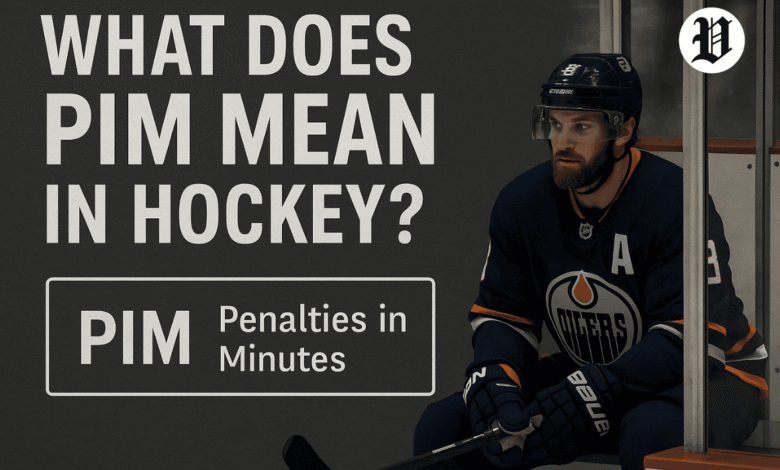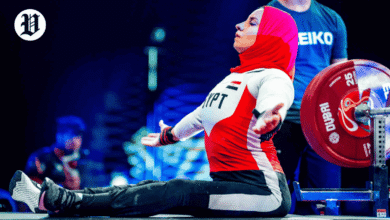PIM in Hockey: A Gritty Look at Penalties in Minutes

Hockey’s a wild, heart-pounding ride—fast, physical, and sometimes a total brawl. If you’re wondering what does PIM mean in hockey or curious about the PIM hockey stat, you’re not alone. It’s a term that pops up constantly, especially for fans diving into the NHL’s raw energy. Let’s break down what is PIM in hockey, explore why hockey PIM matters, and see how this stat fuels the game’s chaos and strategy, all while keeping it real for fans like us.
What is PIM in Hockey?
PIM in hockey stands for Penalties in Minutes. It’s the stat that tracks how long a player sits in the penalty box for breaking the rules. Picture a guy throwing a sneaky elbow or tripping an opponent—boom, he’s off to the sin bin, and his team’s left shorthanded. Every penalty racks up minutes: 2 for a minor (like hooking), 4 for a double minor, or 5 for a major (think fighting or a nasty hit). Those minutes add up to a player’s PIM hockey stat for a game, a season, or their entire career.
For example, if a player snags a 2-minute penalty for slashing and later drops the gloves for a 5-minute fighting major, that’s 7 hockey PIM for the night. PIM hockey matters because those minutes can shift the game, giving the other team a power-play chance to score. Fans searching pim in hockey or what is PIM in hockey are usually trying to figure out how this stat shakes up the ice.
Why PIM Hits Hard
The PIM hockey stat isn’t just a number—it’s a glimpse into a player’s grit and the game’s intensity. High pim in hockey often marks a tough guy, like an enforcer who’s not afraid to throw a big check or square up. Take Dave “Tiger” Williams, the NHL’s all-time pim hockey king with a staggering 3,971 career minutes—pure chaos in skates. But here’s the flip side: too much hockey PIM can burn a team. If a player’s always in the box, their squad’s stuck killing penalties, which can flip momentum or even lose the game.
Coaches and GMs track pim in hockey to gauge a player’s impact. A guy with a sky-high PIM hockey stat might be a physical force, but if he’s sidelined too often, he’s not helping. Fans Googling pim hockey stat or what does PIM mean in hockey want to know how players balance toughness with discipline. It’s a fine line—think Ryan Reaves, who racked up 114 pim in hockey in the 2023-24 season, bringing the heat but sometimes costing his team.
How PIM Plays Out on the Ice
To get what is PIM in hockey, you need to know the penalties. Minor infractions—like holding or interference—cost 2 minutes. Majors, like fighting or a bad boarding call, mean 5 minutes, and a game misconduct might boot you entirely. Misconducts (10 minutes) or match penalties also pile on hockey PIM, though some don’t always change the on-ice action.
When a player’s penalized, they’re off the ice, and their team’s down a skater—unless it’s a coincidental penalty where both sides lose someone. The PIM hockey stat shows up in box scores, tracking each player’s minutes per game. For instance, 12 pim in hockey might mean two minors and a major—a wild night! Sites like NHL.com break down pim hockey stats, showing how they shape roles and strategy. In the 2024 playoffs, for example, a 5-minute major against Boston in Game 7 versus Toronto led to a power-play goal that swung the series—proof pim in hockey can be a game-changer.
PIM’s Heartbeat in Hockey Culture
PIM hockey isn’t just about rule-breaking; it’s the pulse of the sport’s soul. Fans love the physicality, and hockey PIM ties to those electric moments—a crushing hit or a fight that lights up the crowd. Searches like pim hockey or pim in hockey show how fans connect with this stat’s raw vibe. But hockey’s changing. The brawling ‘80s, when teams averaged 25 pim in hockey per game, are gone. Today, with speed and skill ruling (around 8.5 PIM per team in 2023-24), high PIM hockey stats are less common.
Still, pim in hockey defines roles. A grinder with 100+ hockey PIM a season might be the team’s spine, protecting stars like Connor McDavid (just 30 PIM in 2023-24). Coaches now favor players who hit hard but keep pim hockey low to avoid costly penalties, as some X posts have noted.
What Fans Need to Know
If you’re wondering what does PIM mean in hockey or digging into pim in hockey, here’s the deal: PIM hockey tracks penalty time, blending finesse with fire. Want to see it live? Catch games like CHI @ FLA on October 7, 2025, at 5 PM ET on ESPN, where a single pim hockey stat could flip the script.
For pim hockey stats, NHL.com or Hockey-Reference.com offer player breakdowns, game-by-game. New to the sport? Don’t sweat it—pim in hockey is just one piece of what makes hockey a thrilling mess of skill and grit.
Quick PIM FAQ for Hockey Fans
Got questions about pim hockey? Here’s the rundown to clear up what is PIM in hockey and more!
What does PIM mean in hockey?
PIM in hockey is Penalties in Minutes—time spent in the box for infractions like tripping or fighting.
How’s the PIM hockey stat calculated?
Total the minutes: 2 for a minor, 4 for a double minor, 5 for a major. That’s your hockey PIM for a game or season.
Do all penalties count toward PIM in hockey?
Mostly. Minors, majors, and misconducts add to the PIM hockey stat, unless they cancel out (like coincidental minors).
Is high PIM in hockey good or bad?
Depends. High hockey PIM shows toughness, but too much leaves your team shorthanded. Balance wins.
Who’s the NHL’s PIM hockey king?
Dave “Tiger” Williams, with 3,971 career pim in hockey. A legend—check his stats on Hockey-Reference.com.
Why do enforcers pile up PIM in hockey?
They play rough, protecting teammates with hits or fights, boosting their PIM hockey stat.
Can teams benefit from PIM hockey?
Sometimes. A fight can fire up the squad, but too many hockey PIM lead to penalty kills that hurt.
How do PIM in hockey affect a player’s rep?
High pim hockey screams tough, but reckless if overdone. Lower PIM hockey stats get coach love now.
PIM vs. penalties—what’s the difference?
Penalties are the infractions (like slashing). PIM in hockey is the minutes you serve.
Has NHL PIM hockey tracking changed?
Nope—minutes are logged the same. But fewer fights mean lower pim hockey today versus the ‘80s. NHL.com has the full scoop.





One Comment